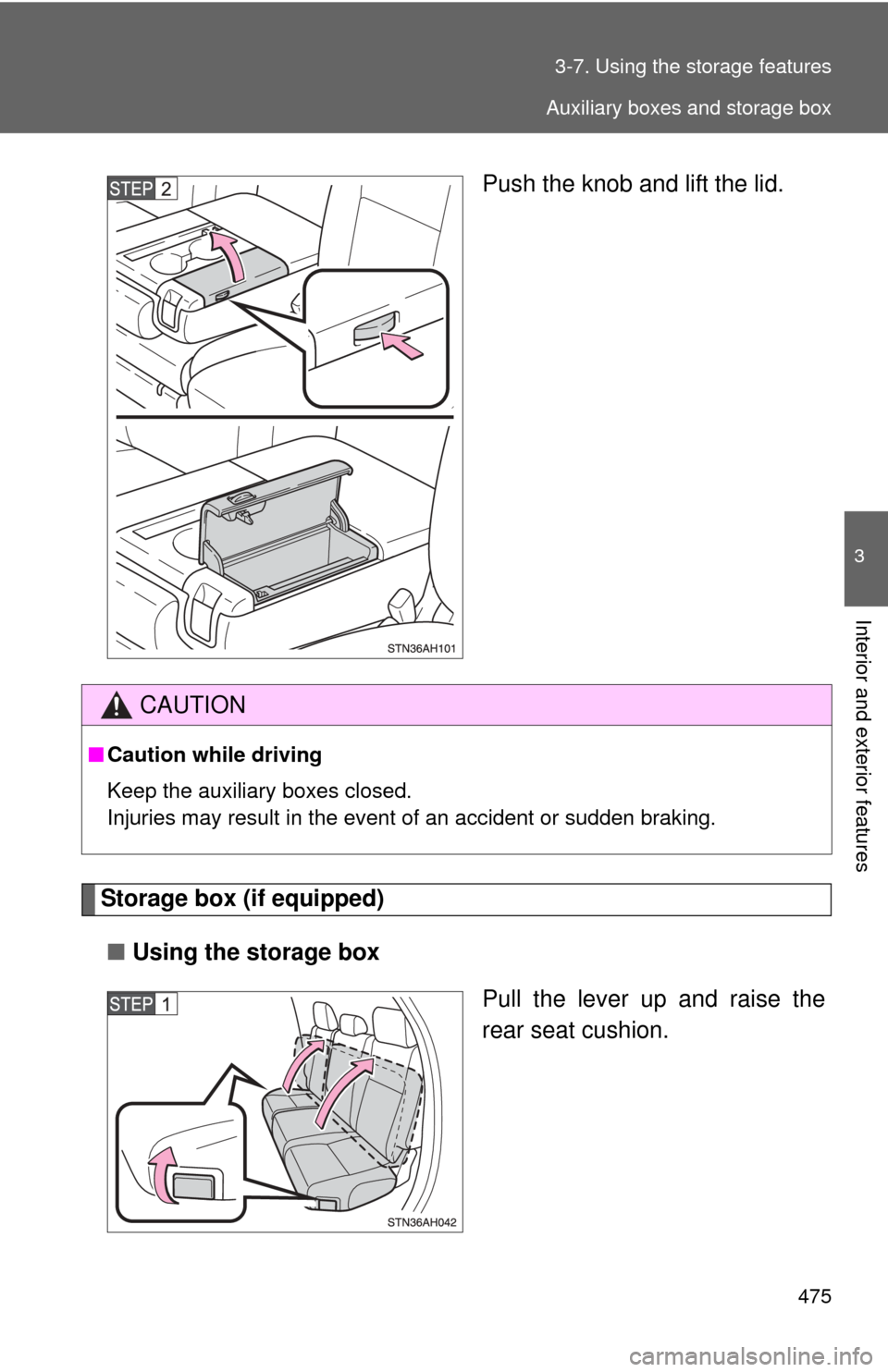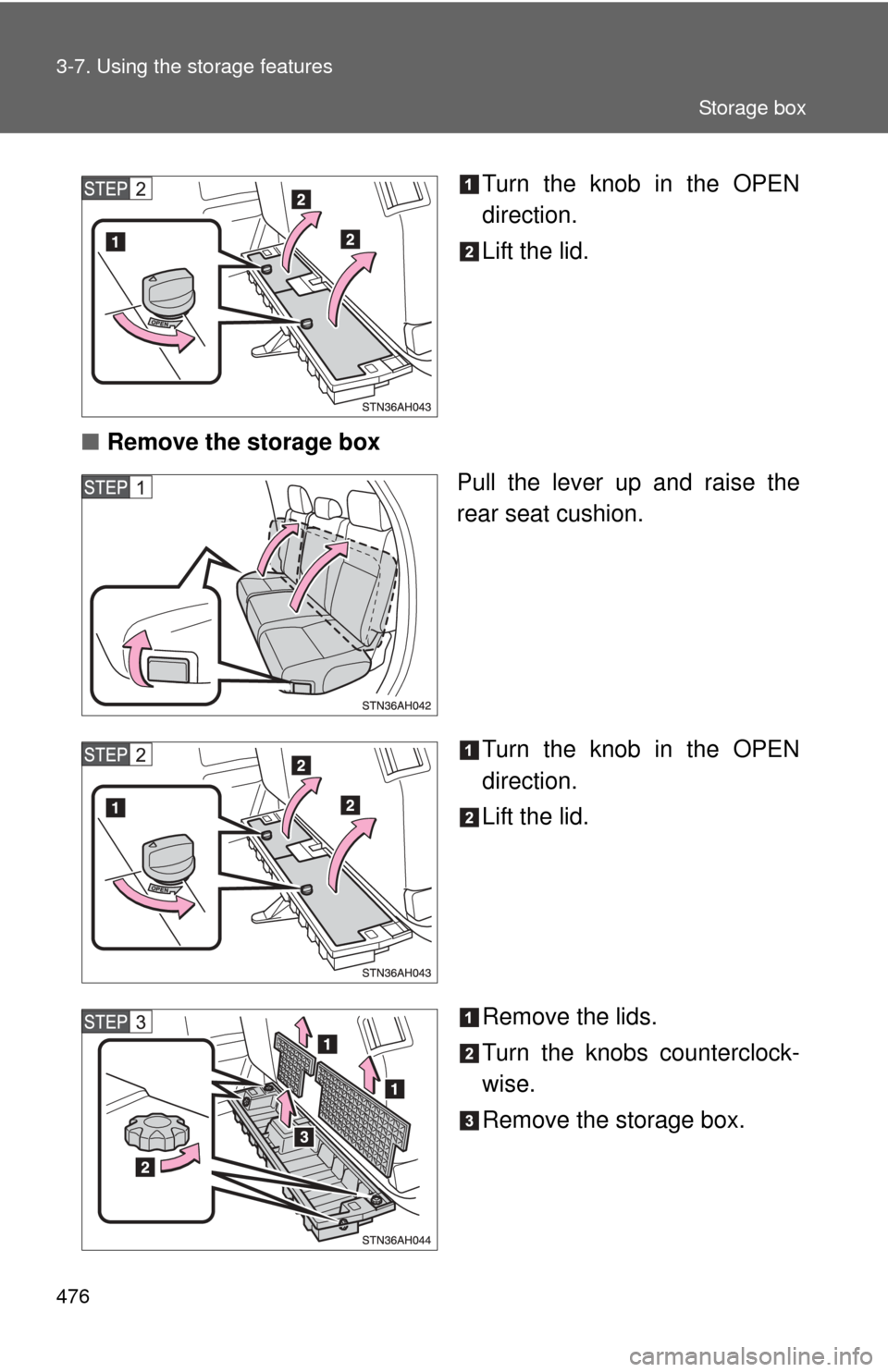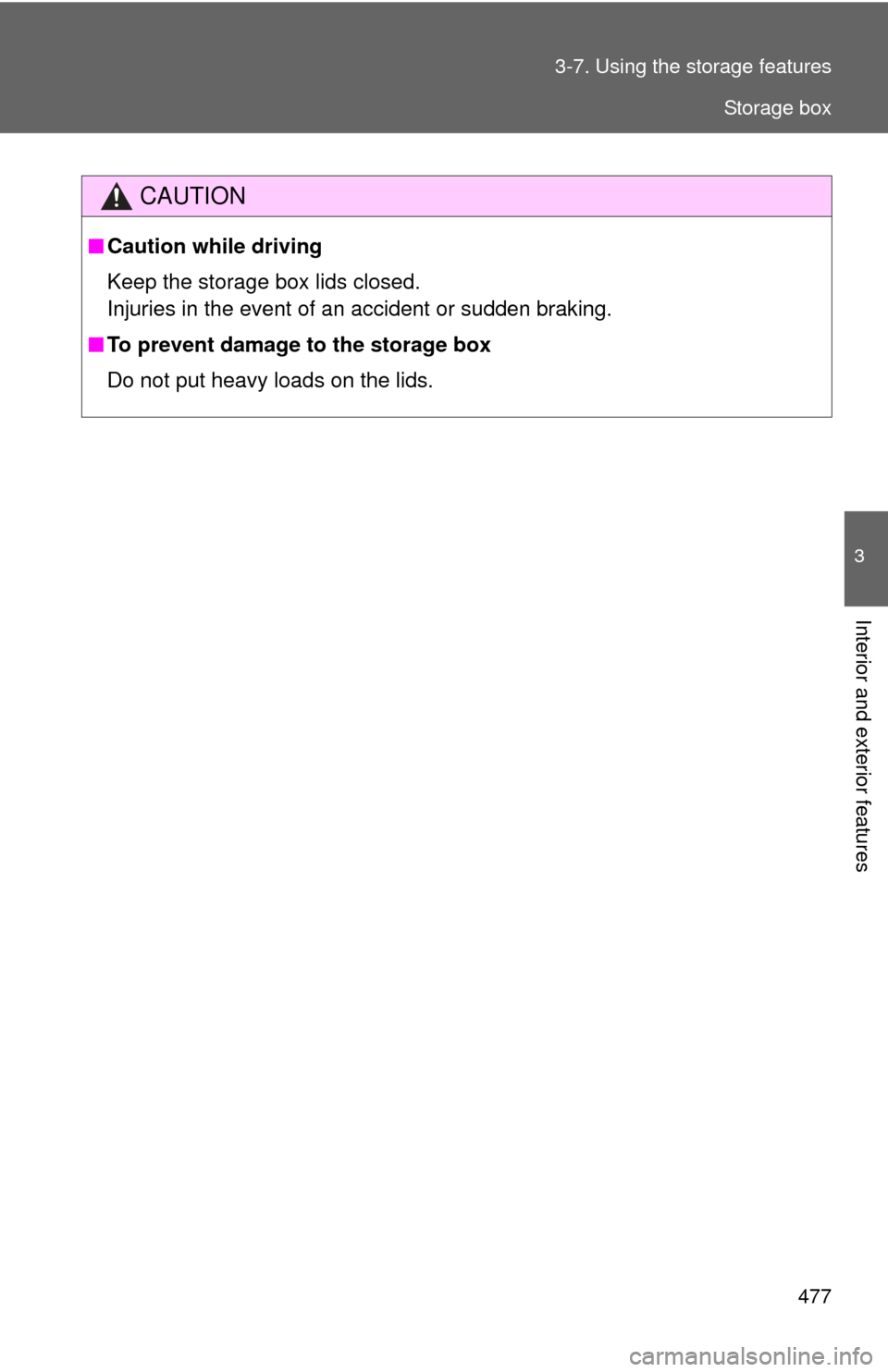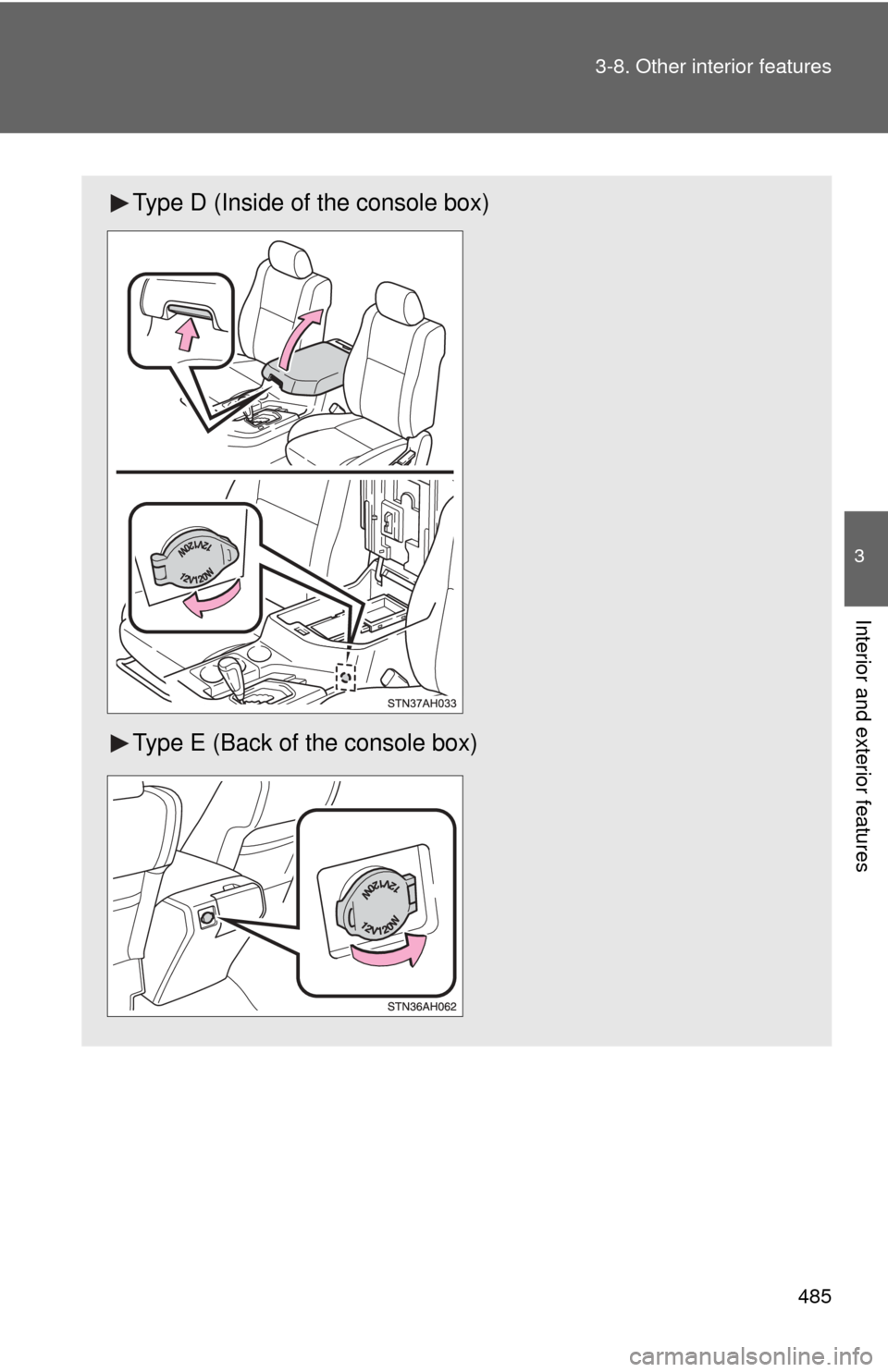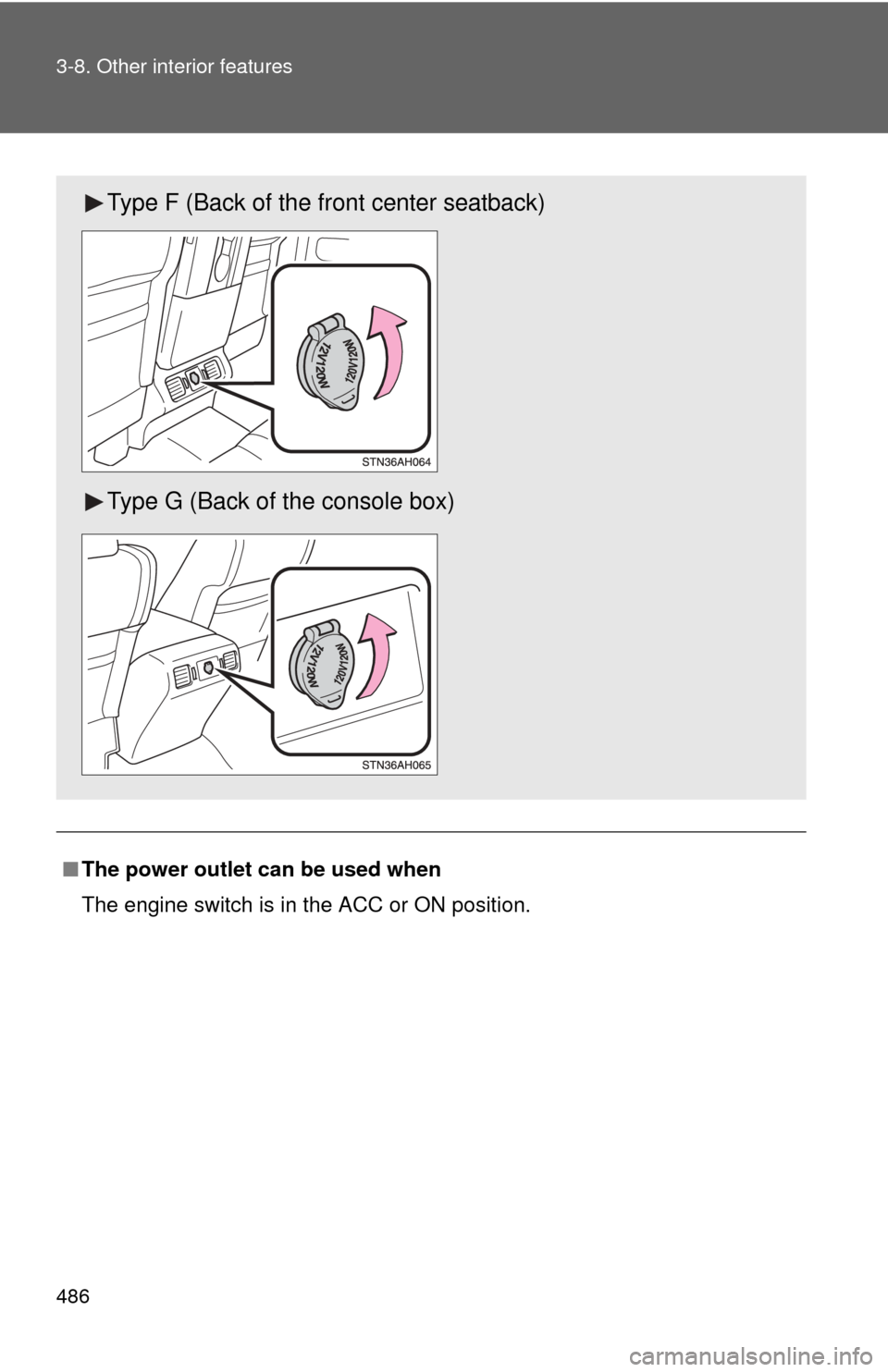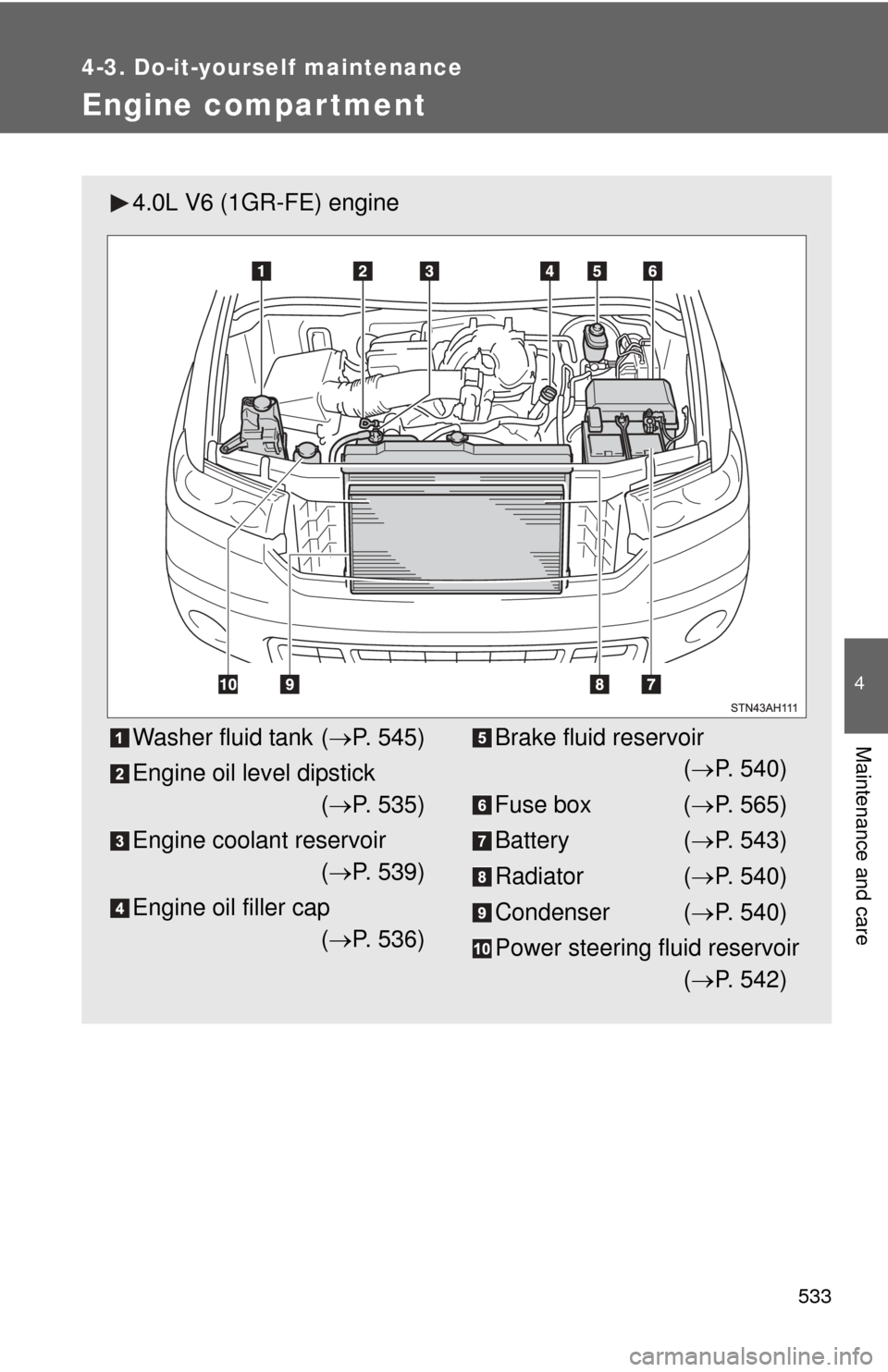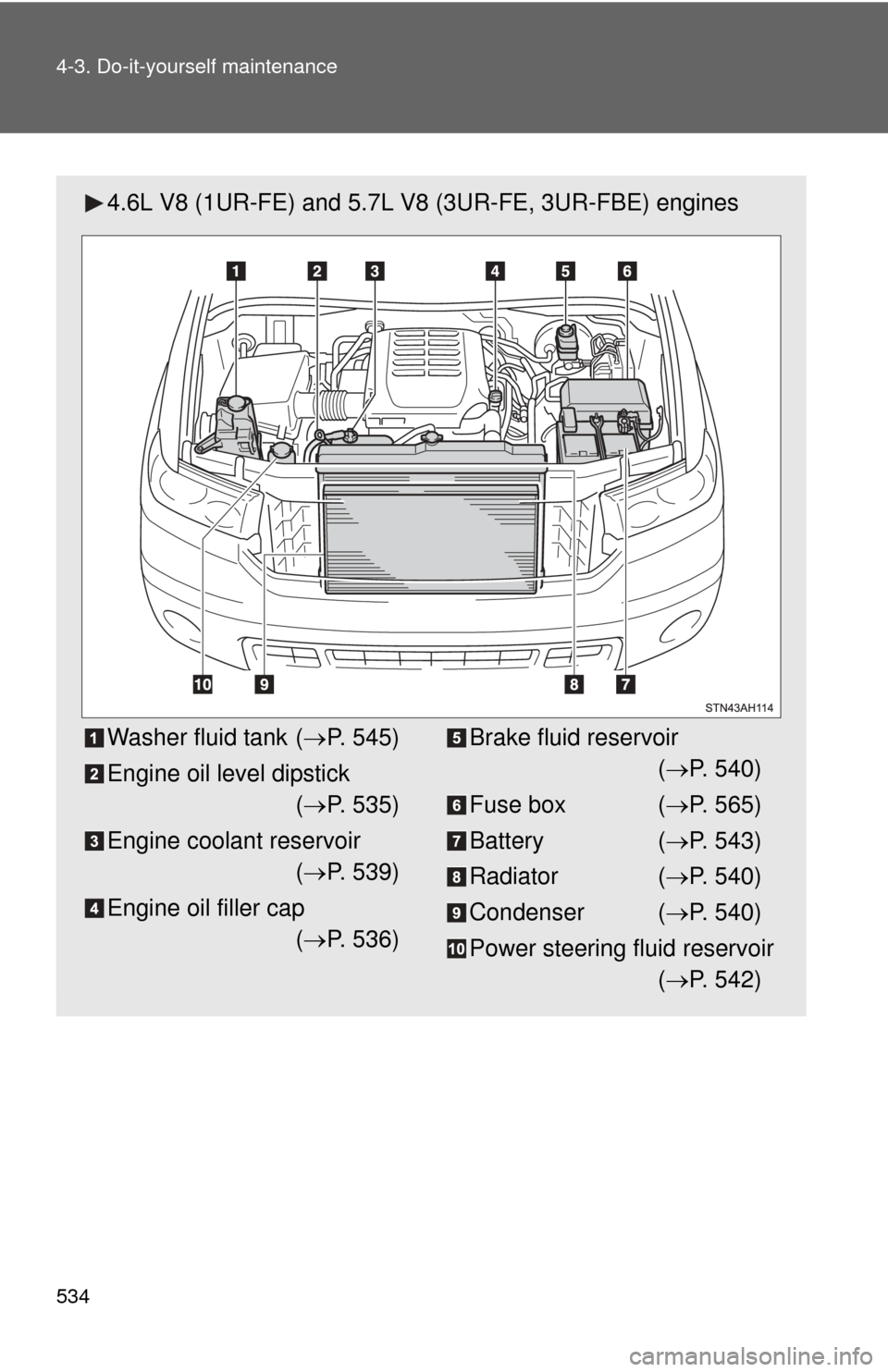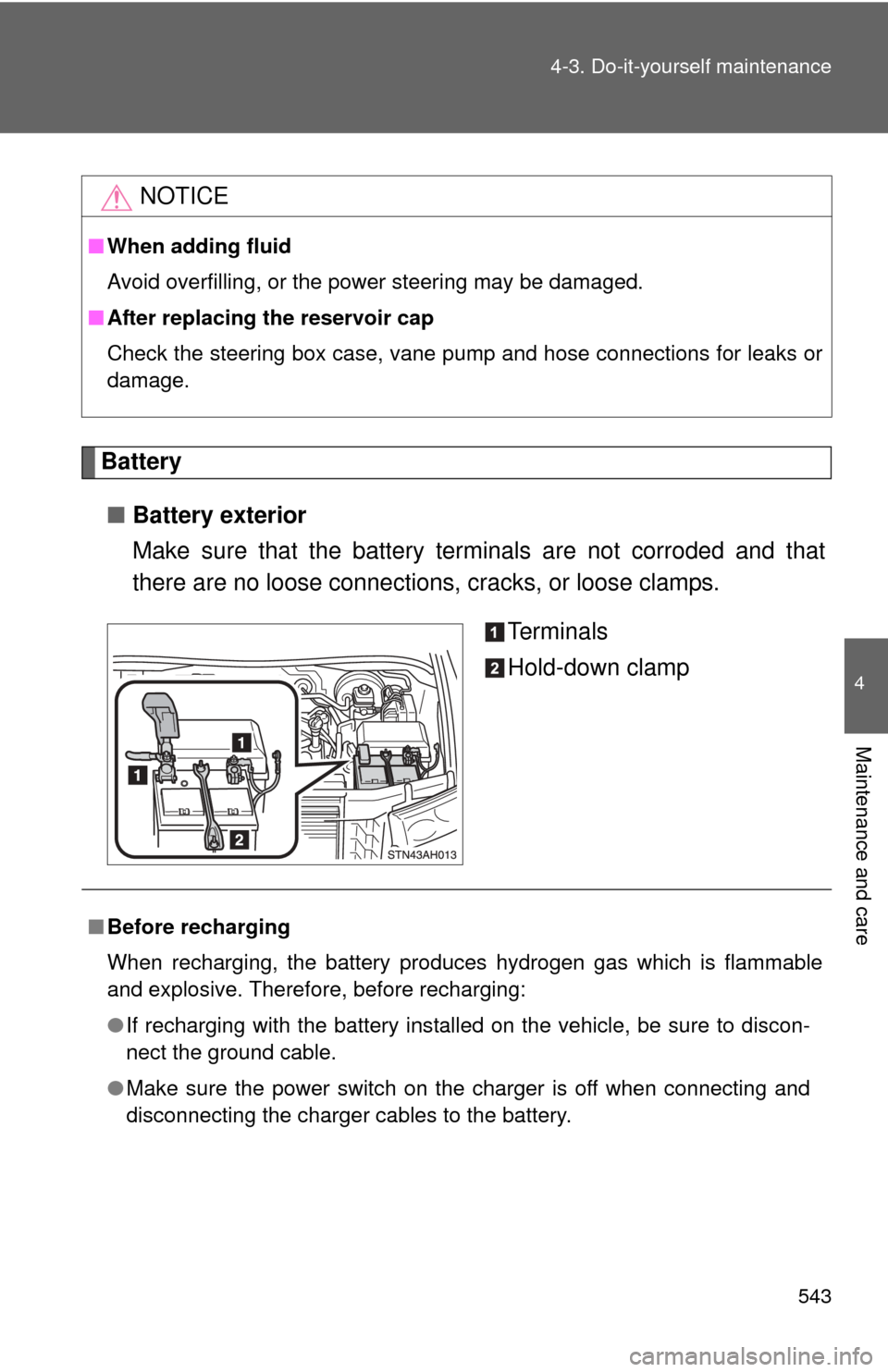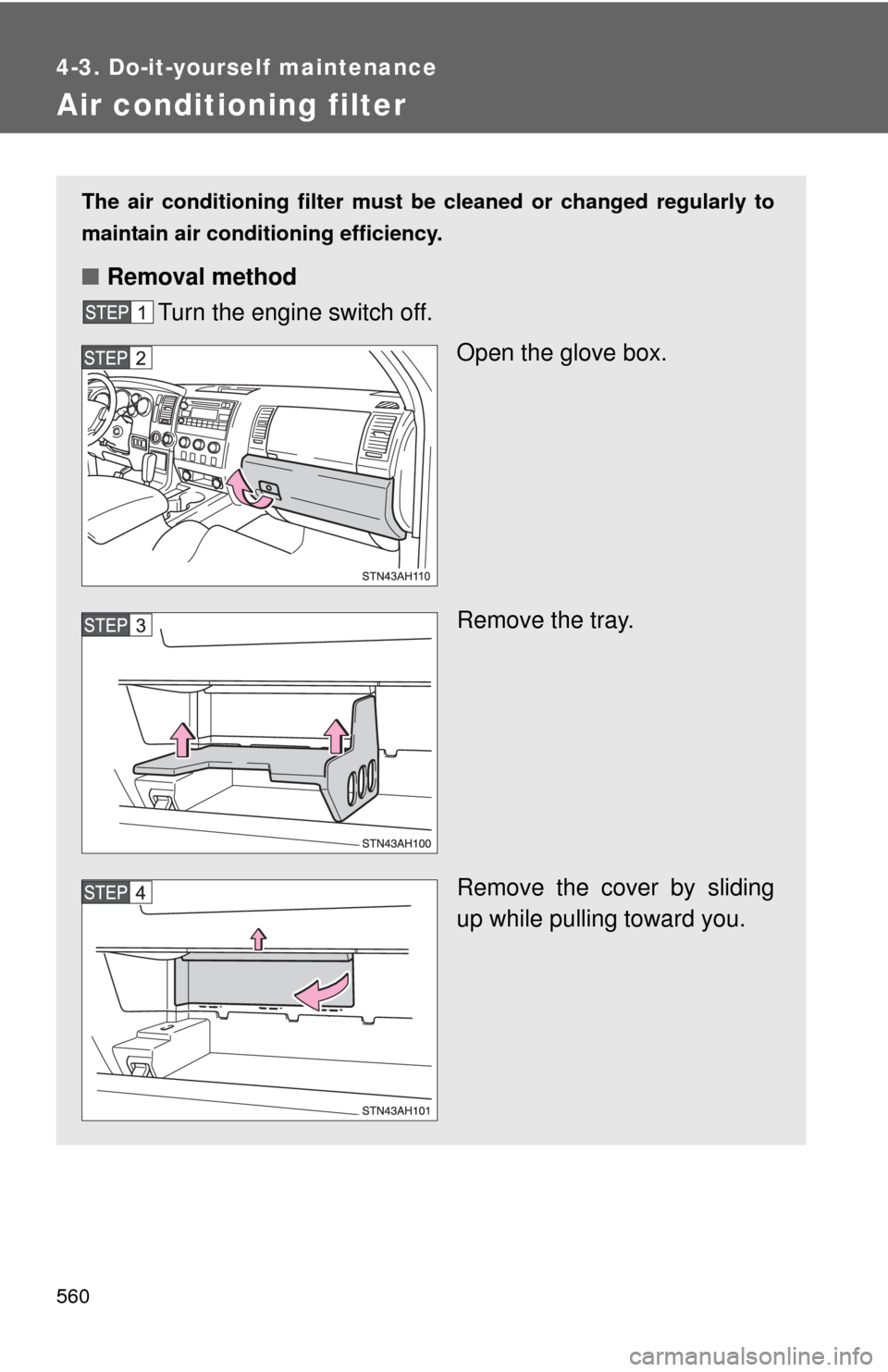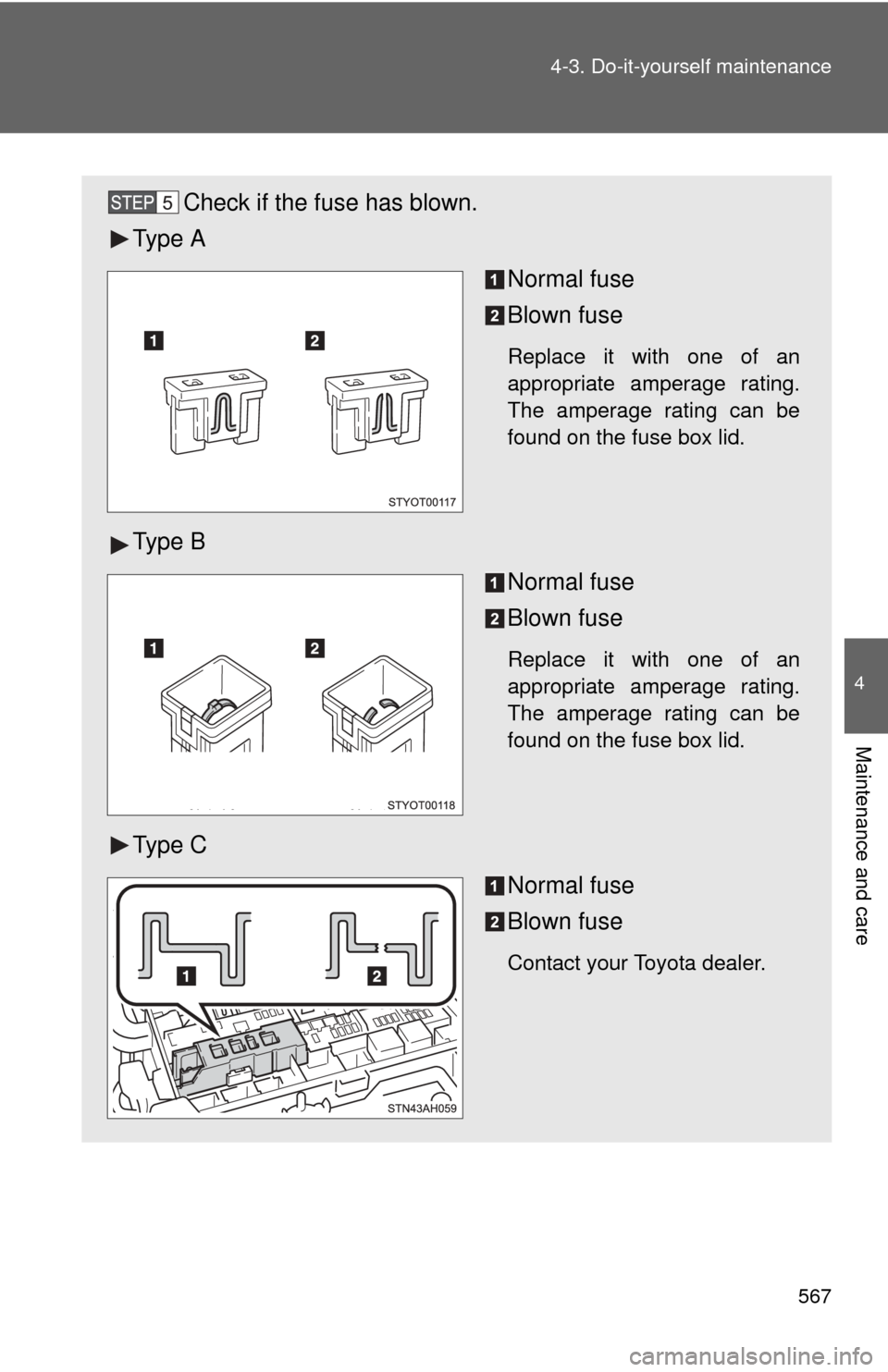TOYOTA TUNDRA 2011 2.G Owner's Guide
TUNDRA 2011 2.G
TOYOTA
TOYOTA
https://www.carmanualsonline.info/img/14/6832/w960_6832-0.png
TOYOTA TUNDRA 2011 2.G Owner's Guide
Page 475 of 732
475
3-7. Using the
storage features
3
Interior and exterior features
Push the knob and lift the lid.
Storage box (if equipped)
■ Using the storage box
Pull the lever up and raise the
rear seat cushion.
CAUTION
■Caution while driving
Keep the auxiliary boxes closed.
Injuries may result in the event of an accident or sudden braking.
Auxiliary boxes and storage box
Page 476 of 732
476 3-7. Using the storage features
Turn the knob in the OPEN
direction.
Lift the lid.
■ Remove the storage box
Pull the lever up and raise the
rear seat cushion.
Turn the knob in the OPEN
direction.
Lift the lid.
Remove the lids.
Turn the knobs counterclock-
wise.
Remove the storage box.
Storage box
Page 477 of 732
477
3-7. Using the
storage features
3
Interior and exterior features
CAUTION
■Caution while driving
Keep the storage box lids closed.
Injuries in the event of an accident or sudden braking.
■ To prevent damage to the storage box
Do not put heavy loads on the lids.
Storage box
Page 485 of 732
485
3-8. Other interior features
3
Interior and exterior features
Type D (Inside of the console box)
Type E (Back of the console box)
Page 486 of 732
486 3-8. Other interior features
■The power outlet can be used when
The engine switch is in the ACC or ON position.
Type F (Back of the front center seatback)
Type G (Back of the console box)
Page 533 of 732
533
4-3. Do-it-yourself maintenance
4
Maintenance and care
Engine compar tment
4.0L V6 (1GR-FE) engine
Washer fluid tank (P. 545)
Engine oil level dipstick ( P. 535)
Engine coolant reservoir ( P. 539)
Engine oil filler cap ( P. 536)Brake fluid reservoir
( P. 540)
Fuse box ( P. 565)
Battery ( P. 543)
Radiator ( P. 540)
Condenser ( P. 540)
Power steering fluid reservoir ( P. 542)
Page 534 of 732
534 4-3. Do-it-yourself maintenance
4.6L V8 (1UR-FE) and 5.7L V8 (3UR-FE, 3UR-FBE) engines
Washer fluid tank (P. 545)
Engine oil level dipstick ( P. 535)
Engine coolant reservoir ( P. 539)
Engine oil filler cap ( P. 536)Brake fluid reservoir
( P. 540)
Fuse box ( P. 565)
Battery ( P. 543)
Radiator ( P. 540)
Condenser ( P. 540)
Power steering fluid reservoir ( P. 542)
Page 543 of 732
543
4-3. Do-it-yourself maintenance
4
Maintenance and care
Battery
■ Battery exterior
Make sure that the battery terminals are not corroded and that
there are no loose connections, cracks, or loose clamps.
Te r m i n a l s
Hold-down clamp
NOTICE
■When adding fluid
Avoid overfilling, or the power steering may be damaged.
■ After replacing the reservoir cap
Check the steering box case, vane pump and hose connections for leaks or
damage.
■Before recharging
When recharging, the battery produces hydrogen gas which is flammable
and explosive. Therefore, before recharging:
●If recharging with the battery installed on the vehicle, be sure to discon-
nect the ground cable.
● Make sure the power switch on the charger is off when connecting and
disconnecting the charger cables to the battery.
Page 560 of 732
560
4-3. Do-it-yourself maintenance
Air conditioning filter
The air conditioning filter must be cleaned or changed regularly to
maintain air conditioning efficiency.
■ Removal method
Turn the engine switch off.
Open the glove box.
Remove the tray.
Remove the cover by sliding
up while pulling toward you.
Page 567 of 732
567
4-3. Do-it-yourself maintenance
4
Maintenance and care
Check if the fuse has blown.
Ty p e A
Normal fuse
Blown fuse
Replace it with one of an
appropriate amperage rating.
The amperage rating can be
found on the fuse box lid.
Ty p e BNormal fuse
Blown fuse
Replace it with one of an
appropriate amperage rating.
The amperage rating can be
found on the fuse box lid.
Ty p e CNormal fuse
Blown fuse
Contact your Toyota dealer.
